5 Signs You Are Burning Fat While Exercising
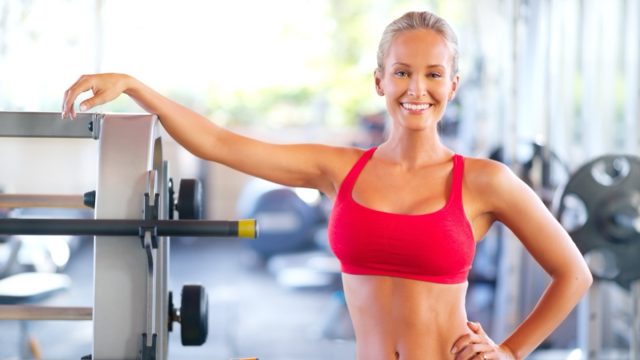
When working out and dieting, the goal is to burn fat – not muscle. But how do you know if you are actually accomplishing it? In a new YouTube video, Autumn Bates, a Clinical Nutritionist who has a Master's in Nutrition Human Performance reveals the "five signs that you're burning fat and not muscle during your weight loss journey."
You Can't Rely on a Traditional Scale
"If you're purely relying just on a traditional scale, it's pretty much impossible to actually tell if you're losing body fat or if you're losing muscle mass. And this really matters if you're looking for long-term sustainable results," Autumn explains.
Related: 11 Ways to Ignite Your Metabolism to Burn Fat All Day
Losing Fat – Not Muscle – Is Beneficial in the Long Run
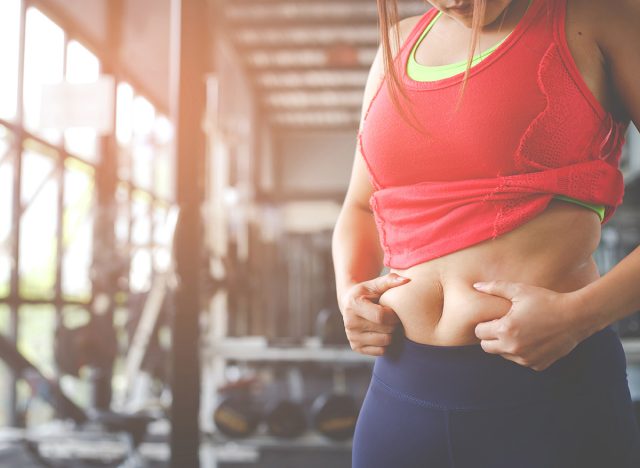
"Most traditional calorie restricted protocols will result in a significant amount of muscle loss. This muscle loss can then cause a decrease in metabolism as well as a host of other issues for long-term health, like reduced bone density, increased risk of osteoporosis, as well as increased risk of insulin resistance and type two diabetes," she says, adding "losing muscle mass just makes us more sensitive to carbohydrates, so it makes gaining weight back so much easier." She explains that using a few tools can help address this issue, allowing you to keep your metabolism revving and so you can reap the "benefits of having muscle mass on our body for long-term health and make it so we can maintain our results for the long run."
First Sign: Your Clothes Are Fitting Differently
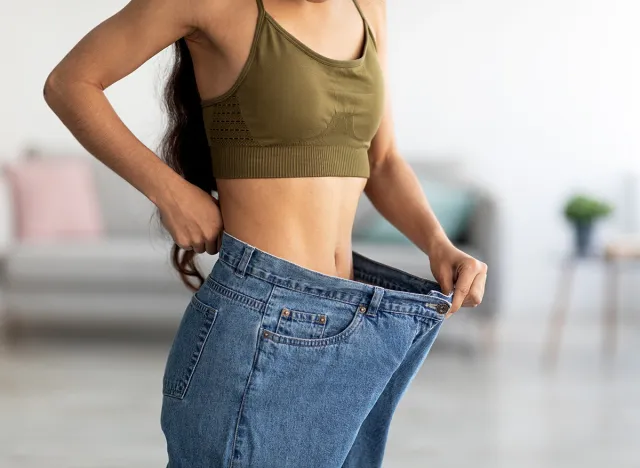
The first sign that you're losing body fat and not muscle mass" is that "your clothes are fitting differently," Autumn says. "Now, you've probably heard the saying that muscle weighs more than fat, and although that's like a little play on words, what it really means is that per volume muscle is going to be a lot more dense. So five pounds of muscle is going to look a lot smaller than five pounds of fat. That's why you'll often see these photos on Instagram or other platforms where you see these people who look really toned, really fit, but they weigh more than you would've expected. That's because they have lower body fat, but they have a lot higher muscle mass. So when you're losing body fat while maintaining or even slightly increasing muscle mass, it can result in your clothes feeling a lot looser. And this is because we're getting rid of body fat that takes up more physical space, but leaving behind the leaner muscle mass, especially for women. You might notice this more so in your pants."
Second Sign: You Are Not As Hungry

"The second sign is that you're not as hungry," says Autumn. "Burning fat as fuel tends to make us less hungry, especially when you're focused on the types of foods that help us to more efficiently burn fat as fuel, which are those that are rich in protein, fat, and fiber," she adds, emphasizing that "protein is the most important macronutrient when it comes to actually maintaining muscle mass during a weight loss process. It's really just mandatory to be eating enough protein to actually maintain muscle mass. When you're losing weight and eating enough protein for the body's needs is so satiating, you're just not really hungry. So eating high quality proteins like eggs, Greek yogurt, beef, chicken, pork, tempeh, are great tools for not only helping to keep muscle mass while burning body fat, but also to just not feel hungry during the weight loss process."
Related: Top 11 Exercises for Leaner, Stronger, Firmer Legs
Third Sign: Your Measurements Are Decreasing

The third sign that you're burning fat and not muscle "is that the measurements are decreasing even if the scale is not," says Autumn. "I prefer taking measurements rather than just looking at the scale because it actually gives you an idea of what your body composition is, depending on which form of measurement you're using. It can even tell you specifically how many pounds of body fat you lost or how many pounds of muscle mass you lost or gained. A regular scale can't do that." You can also measure yourself using an old school tape measure.
Fourth Sign: You Are Getting Stronger
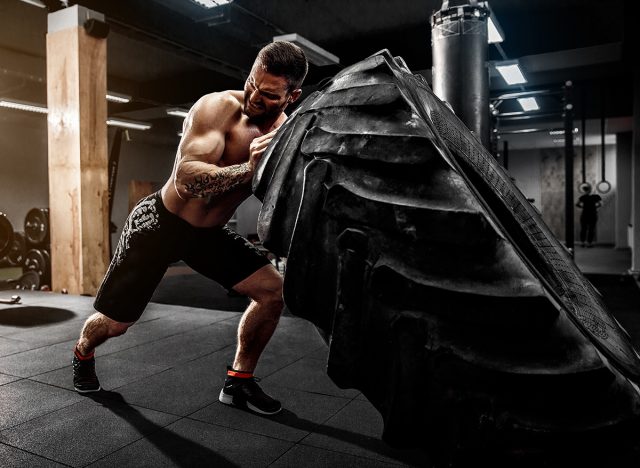
"The fourth sign is that you're getting stronger," she continues. "Assuming that you're actually exercising and using some type of resistance training, which is a necessity to maintain muscle mass during the weight loss process, you should be feeling stronger during your weight loss journey. If you're progressively feeling weaker after every week of workouts, then you're very likely losing muscle mass. If that's the case, it's definitely time to reassess your protein intake, especially to make sure it's actually fitting your body's needs and to make sure that you're getting that protein from high quality complete sources. So if you need a little refresher on that, you can check out my video right up here for the 10 best high quality sources of protein."
Fifth Sign: You See Muscle Definition
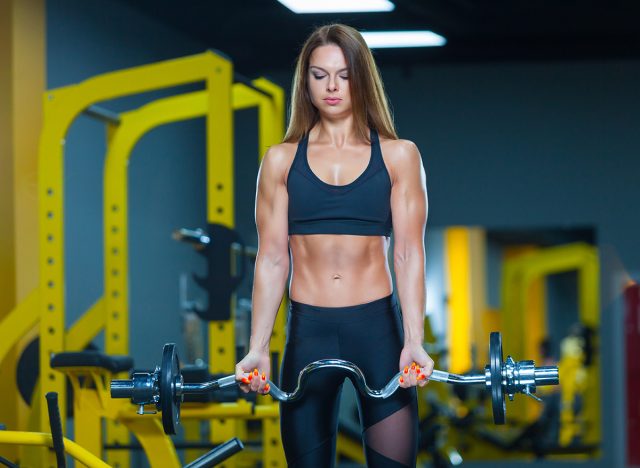
The fifth sign? "You start to notice muscle definition," says Autumn. "Maybe you start to notice that your quad muscles are peaking out or that you're starting to see your abs a little bit. If that's the case, all of these are signs that your body's actually losing body fat, which helps you show muscle definition because muscle definition and toning is really only going to start to become obvious as we decrease body fat percentage, although you can definitely be losing body fat and not noticing muscle mass quite yet. But if you do start to notice muscle definition, then that is one way to determine that you're actually burning body fat."
Take Periodic Progress Pictures
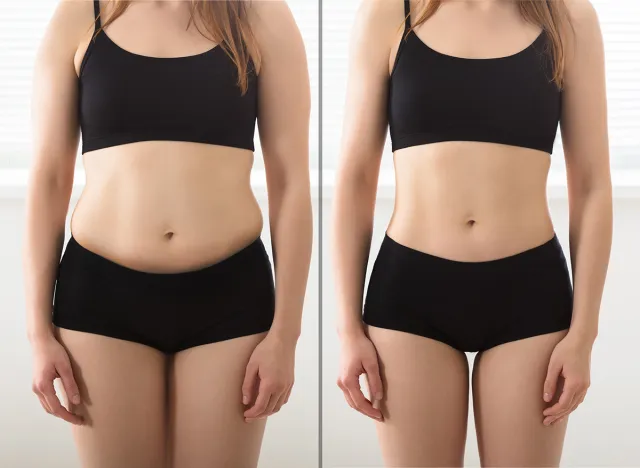
Autumn recommends "taking periodic progress pictures" which "can be helpful for actually seeing this progress," she says. "I did this for myself as well, because it's hard to notice those changes day after day, but actually seeing pictures of your progress can really help to see those changes"
An Expert Agrees That the Scale Is Not a Good Measure of Health

Chris McMahon, a nutrition and fitness coach, agrees that you can't rely on the scale when you are trying to get into shape. "Even if you're working out, you'll see the scale go up and things of that nature because you're retaining water and glycogen, which is an energy form that we can keep in our muscles," he says.
Related: I Lost 100 Pounds Eating the Foods in My New Cookbook
He Also Agrees That Fiber and Protein Intake Are Crucial

He also agrees that your nutrition goals should be eating "plenty of fiber," as it is "connected to hunger and fullness" and amping up your protein intake. "For most individuals who are trying to lean out, we want to make sure that your protein intake is high, because that will help with hunger and fullness," says McMahon. "It'll also help with preserving the muscle mass you have. And if you are lifting weights and you are training, it'll help you build muscle and recover. So we want to make sure that's higher."
💪🔥Body Booster: Try not to rely on the numbers on the scale when you are losing weight. Losing fat – not muscle – is an important goal when it comes to weight loss. Improving muscle mass will help you achieve long term weight loss goals.




